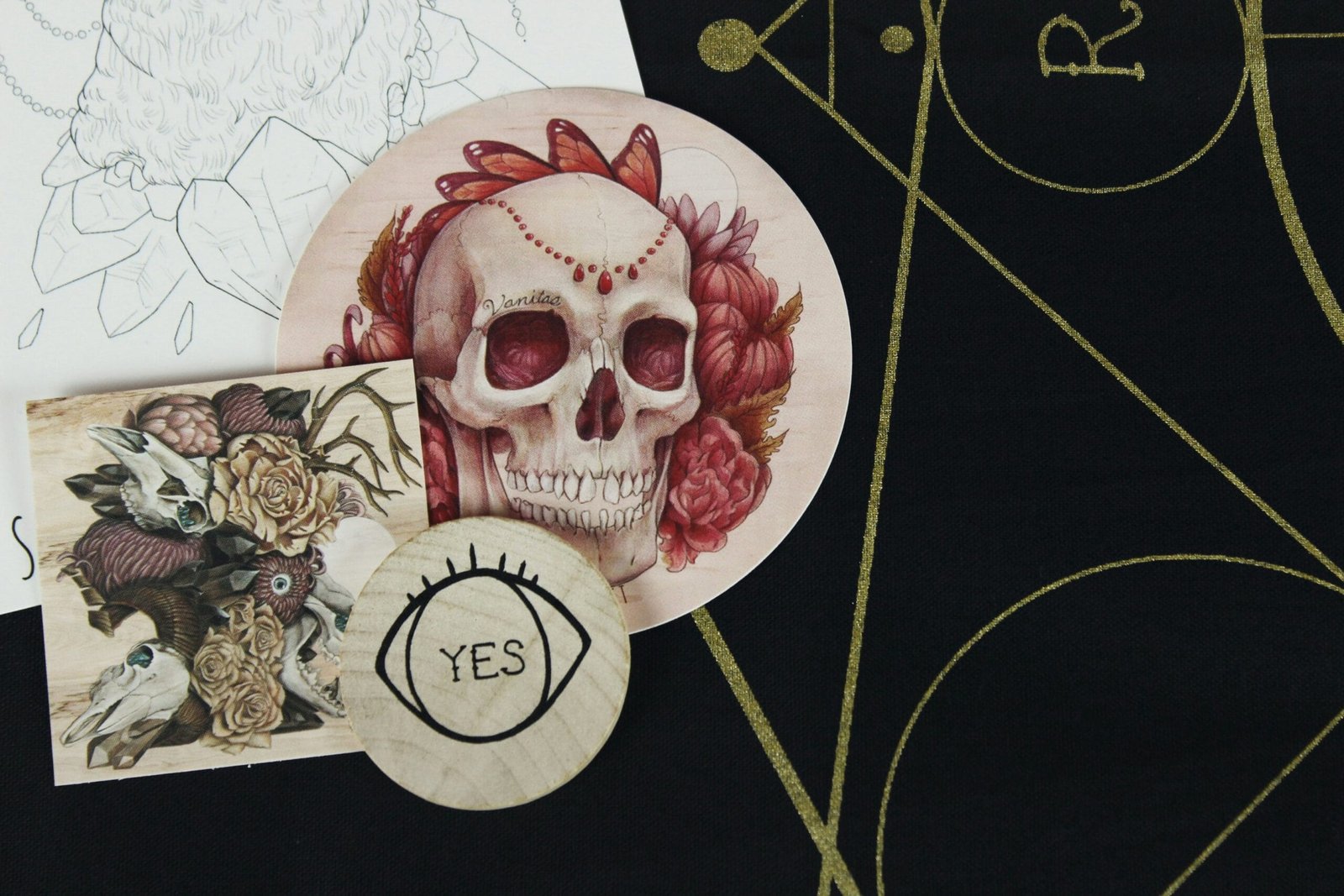Divination Basics: Exploring the Art of Self-Reflection and Insight
Divination, often referred to as the art of foretelling the future, is much more than simply trying to predict what lies ahead. At its core, divination is a method of tapping into your inner wisdom, the energy around you, and even the universe itself. While it can indeed offer glimpses of future possibilities, its true power lies in guiding self-reflection, providing insights into our current circumstances, and revealing hidden truths.
If you’re curious about exploring divination, here are some of the most common tools and techniques, as well as a brief explanation of how they work.
Tarot Cards
Tarot is perhaps the most popular form of divination today. A traditional tarot deck consists of 78 cards, each representing different aspects of life, from personal growth to external events.
- How it works: During a tarot reading, cards are drawn and laid out in a specific pattern or spread. The imagery and symbolism of each card provide insight into your current situation, your subconscious mind, and possible future outcomes.
- Self-reflection aspect: Tarot readings often bring clarity to what’s going on beneath the surface. The images and meanings allow you to see your own patterns, desires, or fears, making it an excellent tool for personal development.
- Divination aspect: Tarot doesn’t just offer a glimpse into the future but reads the energy surrounding a situation, providing valuable insights.
Runes
Runes are an ancient system of symbols used by Germanic and Nordic cultures. Typically made of wood, stone, or bone, a rune set usually consists of 24 symbols, each with its own meaning and association.
- How it works: Runes are often drawn or cast, and the symbols that appear in different positions are interpreted to gain insight. Each rune corresponds to a specific concept, like strength, journey, or transformation.
- Self-reflection aspect: Drawing runes can help you reflect on key areas of life, like relationships, challenges, or personal growth.
- Divination aspect: Runes offer guidance on the flow of energy in your life and can predict challenges, shifts, or upcoming changes.
Pendulums
A pendulum is a simple tool often used to answer yes or no questions. Typically, it’s a crystal or weighted object suspended from a chain or string.
- How it works: When asking a question, the pendulum is held steady and allowed to swing freely. The direction of its swing (e.g., clockwise or back-and-forth) is interpreted as the answer.
- Self-reflection aspect: Pendulums can help you connect with your inner intuition, aligning with what your subconscious already knows.
- Divination aspect: Pendulums can uncover energetic blockages or explore deeper spiritual questions.
Scrying: Crystal Ball, Mirrors, or Water
Scrying involves gazing into a reflective surface, such as a crystal ball, a mirror, or even a bowl of water, to receive visions or messages.
- How it works: By calming the mind and focusing on the surface, images, symbols, or impressions begin to appear.
- Self-reflection aspect: Scrying reveals thoughts, emotions, or spiritual truths that may be hidden, encouraging meditation and intuitive exploration.
- Divination aspect: Practitioners may receive glimpses of possible future events, offering spiritual guidance or predictions.
Astrology
Astrology is the study of how celestial bodies influence human lives. Birth charts provide insight into personality traits, life paths, and potential challenges.
- How it works: Your natal chart is calculated based on your exact birth date, time, and location. The positions of celestial points are analyzed to provide life insights.
- Self-reflection aspect: Astrology enhances self-awareness by helping you understand your strengths, weaknesses, and life’s lessons.
- Divination aspect: Transits predict timing for life events or challenges, helping navigate your path.
I Ching: The Book of Changes
I Ching is an ancient Chinese divination system using 64 hexagrams to answer questions and offer guidance.
- How it works: Coins or yarrow sticks form one of the 64 hexagrams, each corresponding to specific lessons or teachings.
- Self-reflection aspect: I Ching reflects on life’s challenges and offers deep philosophical guidance.
- Divination aspect: Provides wisdom on beneficial paths, based on energy’s current flow.
Tea Leaf Reading: Tasseography
Tea leaf reading interprets patterns left by tea leaves at the bottom of a cup.
- How it works: After drinking tea, the patterns formed by remaining leaves are interpreted to provide insights.
- Self-reflection aspect: Tasseography highlights present emotions, relationships, or challenges.
- Divination aspect: Some patterns may indicate upcoming events or offer glimpses of the future.
Divination and Self-Reflection: How They’re Linked
Divination, often referred to as the art of foretelling the future, is much more than simply trying to predict what lies ahead. At its core, divination is a method of tapping into your inner wisdom, the energy around you, and even the universe itself. While it can indeed offer glimpses of future possibilities, its true power lies in guiding self-reflection, providing insights into our current circumstances, and revealing hidden truths.
If you’re curious about exploring divination, here are some of the most common tools and techniques, as well as a brief explanation of how they work.
Photo by Jen Theodore on Unsplash

